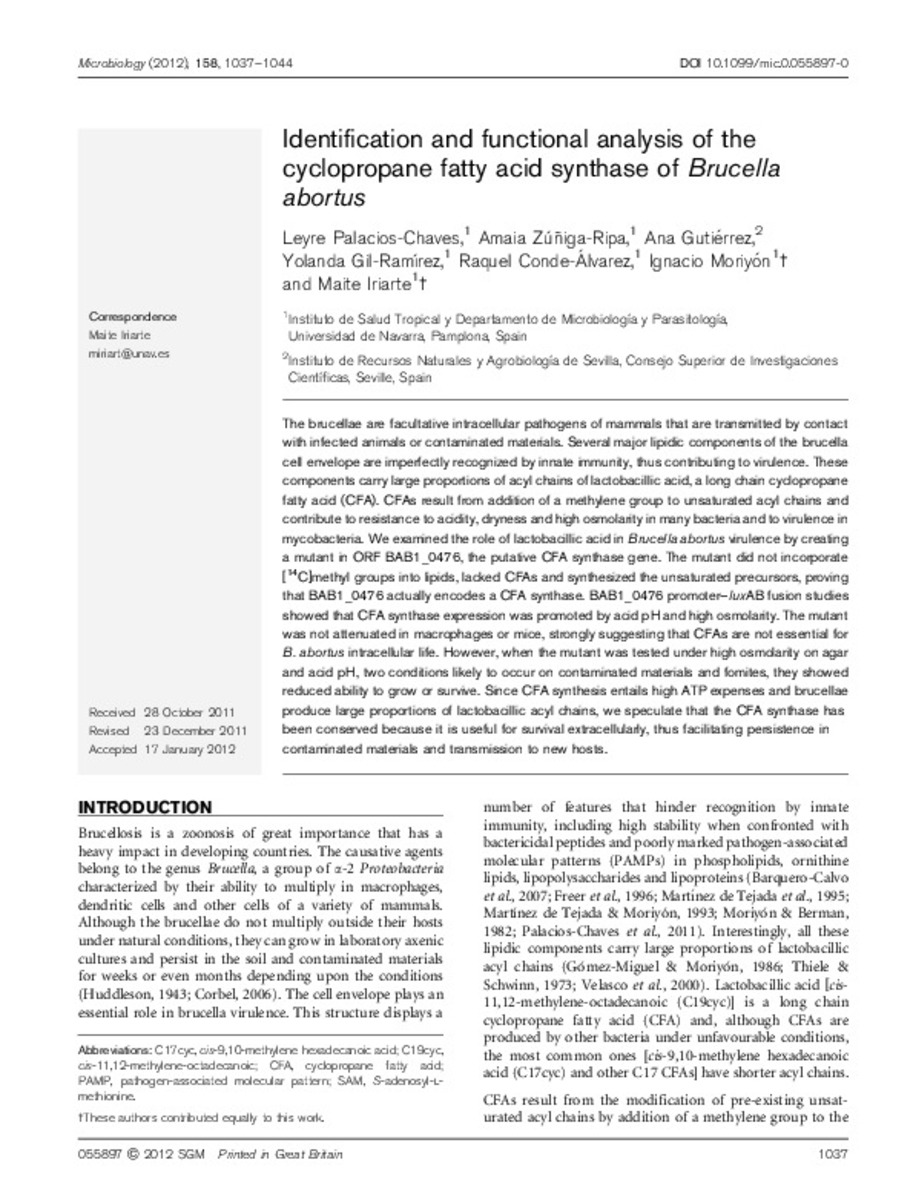Identification and functional analysis of the cyclopropane fatty acid synthase of Brucella abortus
Keywords:
Bacterial proteins metabolism
Brucella abortus enzymology
Cyclopropanes metabolism
Fatty acids metabolism
Methyltransferases metabolism
Female
Publisher:
Society for General Microbiology
Citation:
Palacios-Chaves L, Zuniga-Ripa A, Gutierrez A, Gil-Ramirez Y, Conde-Alvarez R, Moriyon I, et al. Identification and functional analysis of the cyclopropane fatty acid synthase of Brucella abortus. Microbiology 2012 Apr;158(Pt 4):1037-1044.
Statistics and impact
0 citas en

0 citas en

Items in Dadun are protected by copyright, with all rights reserved, unless otherwise indicated.








